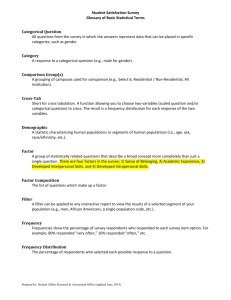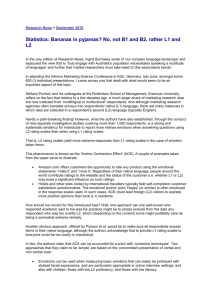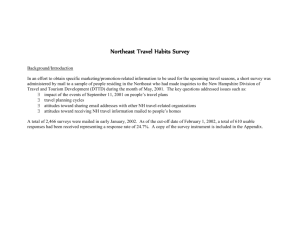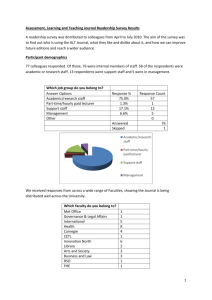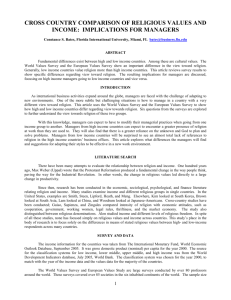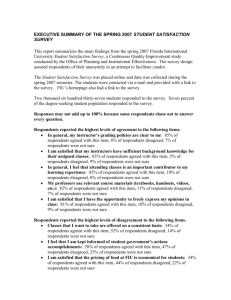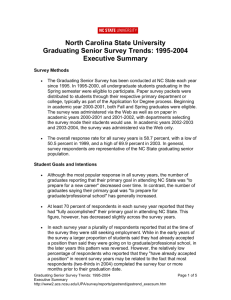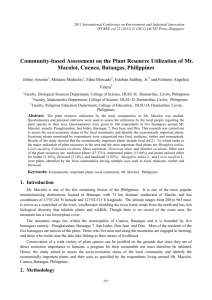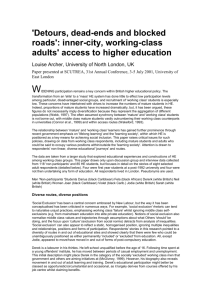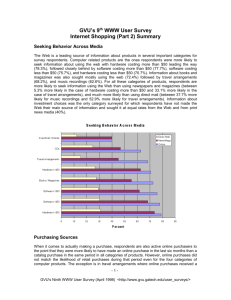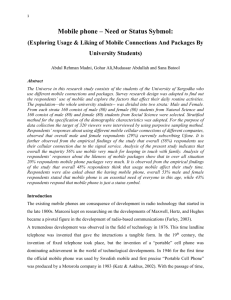Dugong take home
advertisement
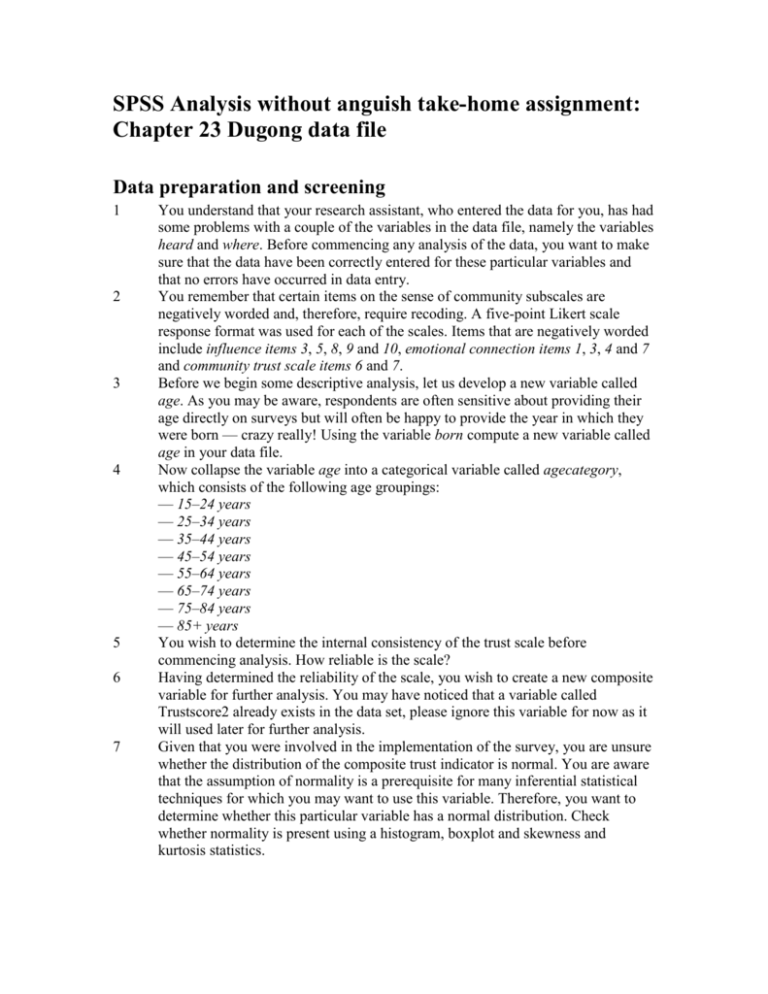
SPSS Analysis without anguish take-home assignment: Chapter 23 Dugong data file Data preparation and screening 1 2 3 4 5 6 7 You understand that your research assistant, who entered the data for you, has had some problems with a couple of the variables in the data file, namely the variables heard and where. Before commencing any analysis of the data, you want to make sure that the data have been correctly entered for these particular variables and that no errors have occurred in data entry. You remember that certain items on the sense of community subscales are negatively worded and, therefore, require recoding. A five-point Likert scale response format was used for each of the scales. Items that are negatively worded include influence items 3, 5, 8, 9 and 10, emotional connection items 1, 3, 4 and 7 and community trust scale items 6 and 7. Before we begin some descriptive analysis, let us develop a new variable called age. As you may be aware, respondents are often sensitive about providing their age directly on surveys but will often be happy to provide the year in which they were born — crazy really! Using the variable born compute a new variable called age in your data file. Now collapse the variable age into a categorical variable called agecategory, which consists of the following age groupings: — 15–24 years — 25–34 years — 35–44 years — 45–54 years — 55–64 years — 65–74 years — 75–84 years — 85+ years You wish to determine the internal consistency of the trust scale before commencing analysis. How reliable is the scale? Having determined the reliability of the scale, you wish to create a new composite variable for further analysis. You may have noticed that a variable called Trustscore2 already exists in the data set, please ignore this variable for now as it will used later for further analysis. Given that you were involved in the implementation of the survey, you are unsure whether the distribution of the composite trust indicator is normal. You are aware that the assumption of normality is a prerequisite for many inferential statistical techniques for which you may want to use this variable. Therefore, you want to determine whether this particular variable has a normal distribution. Check whether normality is present using a histogram, boxplot and skewness and kurtosis statistics. Social and demographic characteristics 1 2 You want to obtain appropriate frequency distributions for all of the social and demographic variables in your data file. Remember, the distribution you use will depend upon the type of variable you are interested in assessing, that is, continuous (measured on ratio or interval scales) or categorical (measured on nominal or ordinal scales). Also, determine measures of central tendency and variability as appropriate. Is data transformation required for any variable? Knowledge and awareness of the proposal 1 2 3 4 5 6 What proportion of respondents had heard about the proposed Dugong Peninsula Sea Change Development? Did awareness of the proposal differ by geographic location (Dugong township versus the other locations)? Generally, were older respondents more aware of the proposal than younger respondents? How many respondents knew where the proposed development was to be located? Where did most respondents believe that the proposed development was to be located? How many respondents knew something about the nature of the proposed development and what could they identify or what did they know? Evaluation and impact assessment 1 2 3 4 5 6 7 8 What was the degree of approval among respondents in relation to the proposed development? Were respondents in the Dugong township more likely to disapprove of the proposal? Is the respondent’s knowledge of the proposal related to how they evaluate the proposal (their degree of approval)? What were the perceived benefits of the proposed development? In the survey you have included a trust scale, because previous project experience has highlighted that perceived trust is a determinant of community perception in relation to development projects. You have also observed that females tend to be more trusting of proponents than males, so you wish to test this hypothesis. You also are interested in investigating whether degree of trust differs by geographic location and whether less trust is exhibited by respondents in the Dugong township as opposed to the smaller hamlets located to the south. Given your interest in the issue of trust you also want to determine what contribution variables such as age and knowledge make to the perception of trust in the proposal. Finally, because your community consultation program is now almost complete, you want to determine whether some of the information provision and information acquisition mechanisms that you have employed have been beneficial. You recontact respondents involved in the first survey and ask them to recomplete the trust scale. Having entered this additional data, you now want to determine whether your intervention has been successful and whether there has been any change in the trust indicator.






